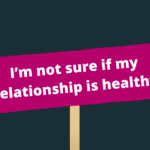Domestic abuse provision: referrals to domestic abuse services
Return to publications page
About these dashboards
Through Women’s Aid’s unique national datasets, we estimate the number of women and children who are referred into local domestic abuse services across England in each financial year.
These referral estimates are some of the only data in England on the number of survivors who access refuge and community-based support services nationally, including how many women and children are supported by the service, and how many survivors are unable to access the service. There are many reasons why a referral into a service may end up being rejected, including that the service does not have the capacity to accept the referral or that the survivor decides they do not want support at that time. Reasons for unsuccessful referrals into refuge is explored in more detail in our report Unsuccessful referrals into refuge.
The referral estimates provide a valuable insight into domestic abuse service provision and the trends impacting survivors and the services which support them. These trends and impacts are explored further in our Annual Audit reports.
We use data from our On Track and Routes to Support national datasets to calculate these estimates. Further information about the methodology can be found underneath the dashboards.
Referrals into refuge
Referrals received by refuge services
Dashboard shows the estimated number of referrals which were received, accepted and rejected in each year by refuge services listed on Routes to Support in England.
Number of women and children supported by refuge services
Dashboard shows the estimated number of referrals accepted and the estimated number of children accommodation each year by all refuge services on Routes to Support in England.
Referrals into community-based support (CBS) services
Referrals received by CBS services
Dashboard shows the estimated numbers of referrals which were received, accepted and rejected in each year by all CBS services listed on Routes to Support in England.
Number of women and children supported by CBS services
Dashboard shows the estimated number of referrals accepted and the estimated number of children accommodation each year by all CBS services on Routes to Support in England.
Methodology
We calculate the referral estimates using data from our On Track and Routes to Support national datasets. The On Track national dataset is an anonymised dataset containing information from local domestic abuse services which use the Oasis On Track case management system to manage their casework. Data from the Routes to Support national dataset includes details on the number and capacity information on local domestic abuse services.
Referral estimates are calculated using the following steps:
a. Refuge: calculated the ratio of referrals which were accepted and rejected for refuge services using Oasis On Track and applied this to the refuge services listed on Routes to Support for the same region and do not used Oasis On Track.
b. CBS: calculated the ratio of referrals which were accepted and rejected into each individual service type (e.g., outreach, IDVA, floating support) for services using Oasis On Track applied to services not using On Track that are listed on Routes to Support for the same region.
c. Number of children: the average number of children per woman accessing refuge and CBS services applied to the above two estimates.
Further information
There are no reliable prevalence data on domestic abuse. The Crime Survey of England and Wales (CSEW) offers the best available data and the latest figures (from the year ending March 2023), found that an estimated 1.4m women experienced domestic abuse. Using this data, our latest referral estimates suggest that only 1 in 10 women and 1 in 10 children experiencing domestic abuse successfully accessed a refuge or CBS service.
Accessing a refuge or CBS service will not be appropriate for all women and children experiencing domestic abuse but our referral estimates provide an insight into the how current levels of domestic abuse service provision are meeting the demand for their support.
You can read more about this in our Annual Audit reports where the referral estimates are explored in the context of the trends affecting survivors and domestic abuse services in each financial year:
For more information about our On Track and Routes to Support national datasets, visit our website:
More information about the available data on domestic abuse, including the prevalence and gendered nature of domestic abuse, can be found on our website:



